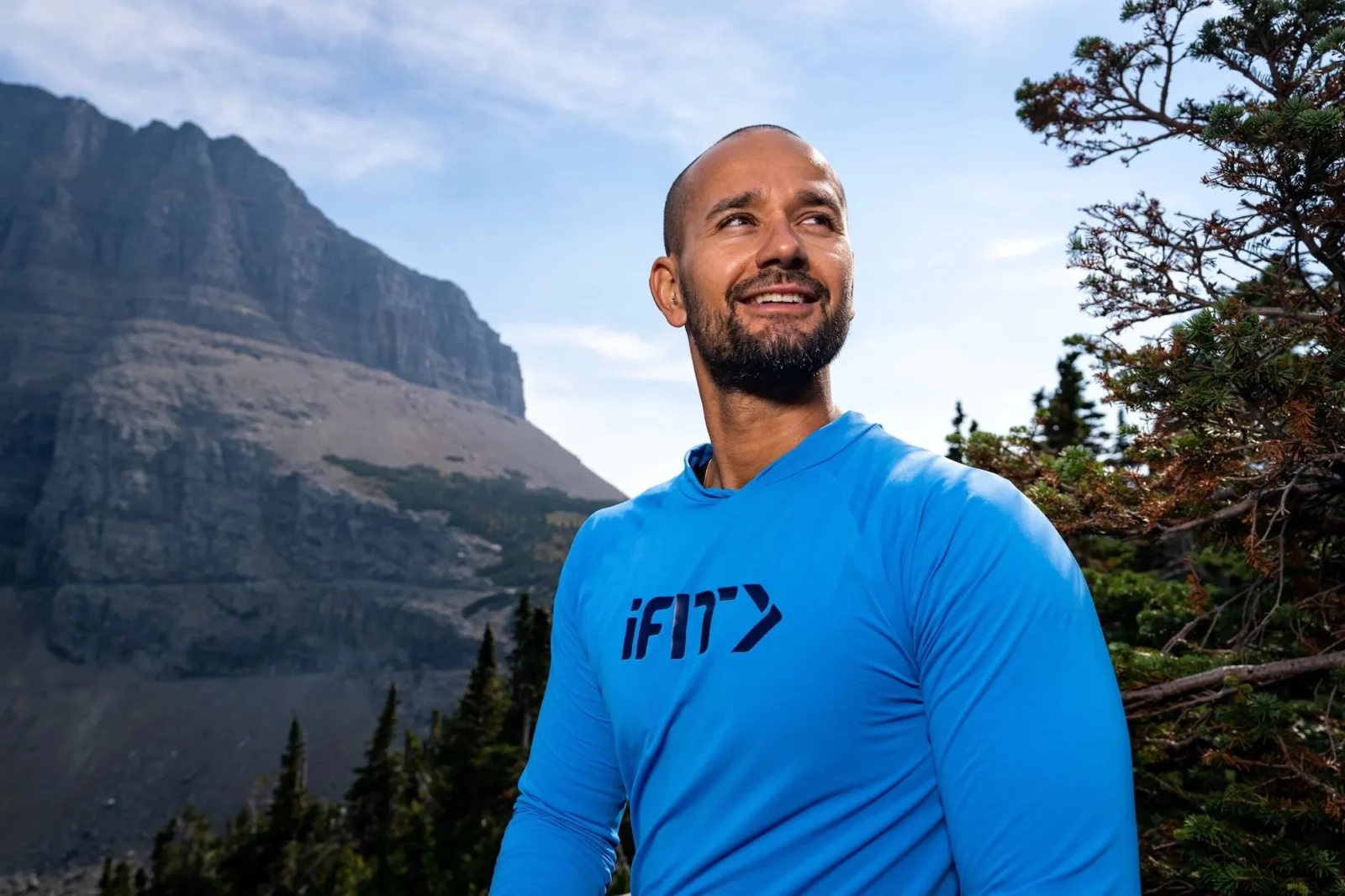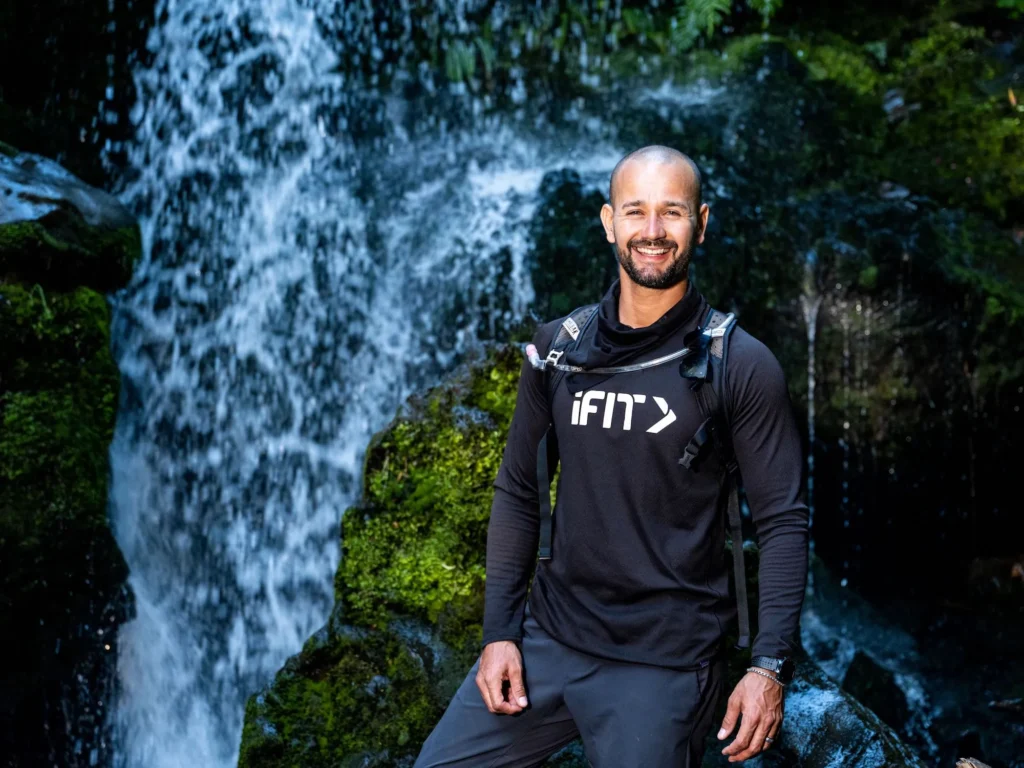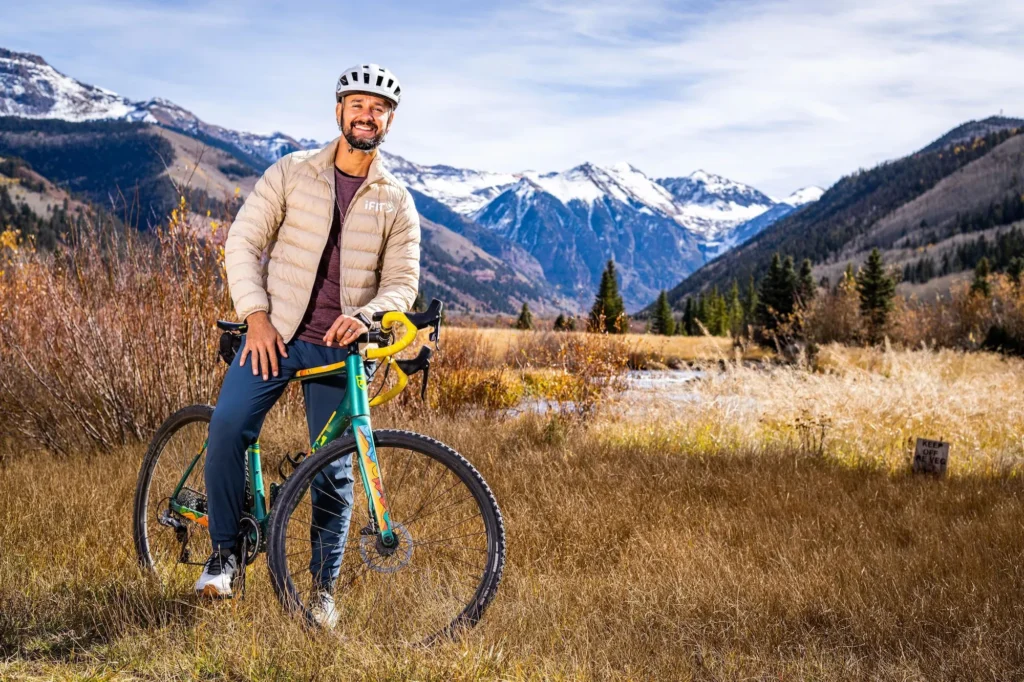Trainer Talks: iFit’s Paulo Barreto Blends Intensity & Empathy

Paulo Barreto fuses fitness with life lessons, teaching the art of resilience and the power of consistency
Paulo Barreto embodies a unique style of compassion and tenacity. Specializing in high-intensity interval training (HIIT), bodyweight mechanics and kettlebell exercises, the iFit trainer brings a unique blend of rigor and support to his coaching style. Often described as a “sour patch,” he combines the toughness necessary for physical endurance with a warmth that encourages and motivates his clients.
His approach to fitness goes beyond traditional methods, emphasizing the transformative power of disciplined, high-energy workouts. Barreto’s philosophy centers on the idea that fitness is not just a physical journey, but a gateway to overall life improvement, building both physical strength and mental toughness. This approach breeds loyalty among clients.
With his wife and business partner Hannah Eden of Hannah Eden Fitness, Barreto continues to inspire and challenge individuals to reach their full potential, overcome obstacles, and lead a healthier, more dynamic life.
Athletech News spoke with Barreto about his approach to training, client retention and motivation.
This conversation has been lightly edited for clarity and length.
Athletech News: You specialize in HIIT, bodyweight mechanics and kettlebells. How do you incorporate these techniques into personalized training plans, and what benefits do they offer compared to traditional training methods?
Paulo Barreto: As much as fitness and training are vital parts of living a more vibrant life, I understand they can sometimes be the most challenging commitments one makes to oneself. By this, I mean that typical life chores and daily to-dos tend to take priority when choosing to carve out 30 or more minutes per day to dedicate to moving your body.
I like to incorporate intense and diverse workout routines where we can use a mix of strength compound movements with explosive and powerful exercises to get the most out of a workout in 30 minutes or less.
A wise man once said, “The best workout is the one that keeps you coming back.” So, I’ve found that breaking the monotony of slower and more boring routines with fast-paced workouts that require minimal equipment — such as bodyweight exercises and one heavy kettlebell — works well to keep my athletes engaged and eager for more. It helps eliminate the “barriers to entry” if all you need is a 6×6 area in your living room and one piece of equipment you keep under your bed. With fewer excuses, we achieve more.

ATN: Given your experience, you must have encountered clients with various obstacles and limitations. How do you approach these challenges, and what strategies do you employ to help clients overcome them?
PB: The most common limitations I’ve encountered are self-limiting beliefs. To overcome these, it’s crucial to help the athlete reframe the view they have of themselves in their mind. Changing their perspective requires them to feel safe and supported.
Fitness is about becoming vulnerable in order to become stronger. We must first understand what we lack and what we need, and then know what we have to do to improve. It’s about creating a safe space where clients can cut through their excuses and truly understand the underlying reason they choose to temporarily suffer and work hard. This process fosters accountability and encourages consistency.
ATN: Your coaching style is described as a blend of toughness and support. How do you balance these elements to create a supportive yet challenging training environment?
PB: Support during the process is essential so that the athlete feels they don’t have to figure out the next steps alone. However, toughness is also necessary to hold them accountable. As humans, we often seek the path of least resistance, which can involve deceiving ourselves. If you ask any conscious individual whether an active lifestyle would improve their lives, I’d argue that the vast majority would say “yes,” yet most choose the opposite.
We manufacture lies and excuses to remain complacent and comfortable. Allowing a client to continue this behavior means you’re no longer equipped to guide them toward choosing the harder path. Therefore, I focus on fostering extreme ownership in my clients, helping them become true to who they are and what they need to do to become who they want to be. Being tough doesn’t mean being cruel, loud, or excessive; it means empowering their stronger self to take the lead in what they do next.

ATN: Your 75-mile paddleboarding journey across the Atlantic was both a physical and mental feat. How do you translate personal achievements into motivational tools for your clients?
PB: Completing a 75-mile paddleboard journey across the Atlantic, from Bimini to Florida, was a challenge that took me around 16 hours. Initially, I struggled to stay on my board and, in hindsight, my ocean training wasn’t entirely sufficient. Yet, I took on the challenge with the mindset of “I will figure it out,” although the figuring-out part took much longer than expected.
We launched our boards at 12:30 am, navigating the pitch-black ocean amidst a mix of excitement and fear. With every stroke, I grappled with thoughts of sharks and other marine life potentially swimming beneath me. My mental toughness was tested every minute, and my fortitude broke down several times, forcing me to rebuild it repeatedly.
The thought of quitting crossed my mind more times than I can recall, as my mind conjured up creative justifications for not completing the journey. Nevertheless, I kept paddling. It taught me many lessons, but perhaps the most impactful was that the only way to fail is to quit. This lesson applies to fitness, life, relationships and business – you can never fail if you just keep on paddling. This is the motivation and perseverance I aim to instill in my clients.
ATN: How do you and Hannah integrate the belief that fitness leads to a better life into your business model and translate that to your clients?
PB: Fitness laid the foundation for everything we have today in our lives and business. It was in the gym where we learned the power of delayed gratification, the importance of working consistently day in and day out, with the understanding that the compound effects would manifest later down the road. It’s where we realized that if we follow a plan and show up as our most formidable selves, giving our best effort, then achieving our goals becomes not a question of if but when. These traits are transferable to all aspects of our lives.
This journey begins with temporary suffering, leading to becoming a stronger human on the other side. The lessons we’ve learned are universal, even though their applications can be endless. Hence, our passion lies in igniting change in as many people as we can reach. We want them to discover these lessons for themselves and to strive for what they once thought was unattainable.
This philosophy has profoundly impacted our client base, encouraging them to see fitness not just as a physical journey but as a transformative life experience.



